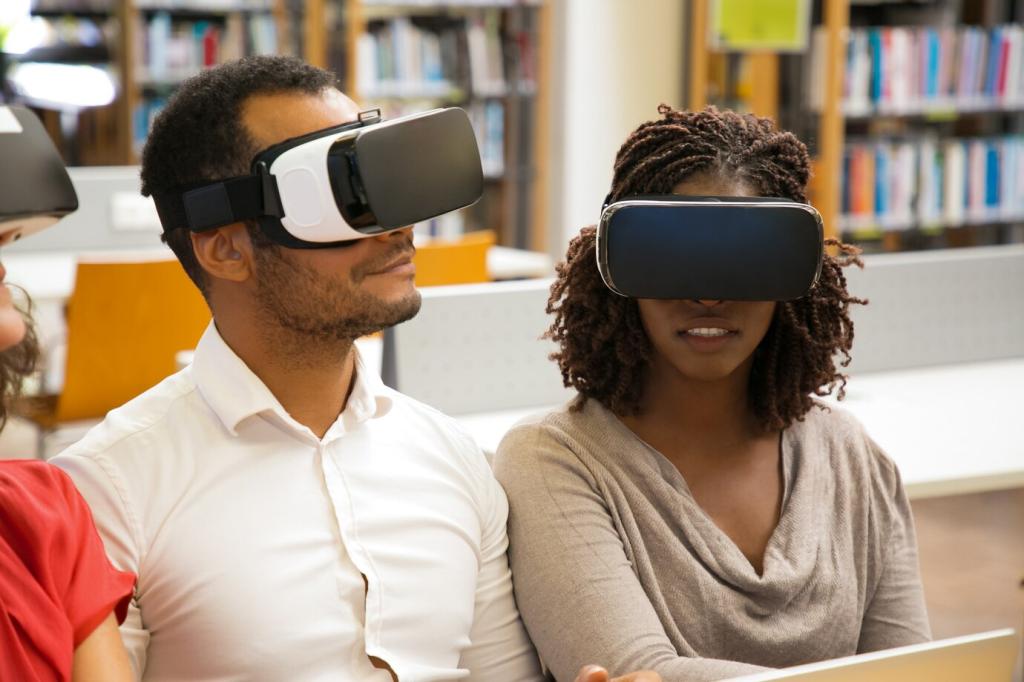Interactive Elements in Digital Education: Learn by Doing
Selected theme: Interactive Elements in Digital Education. Step into a learning space where clicks spark curiosity, questions invite discovery, and every interaction turns a concept into lived experience. Join us, comment with your favorite tools, and subscribe to keep the conversation lively.
Why Interactivity Changes How We Learn
When learners interact—tapping, dragging, answering, or simulating—they shift from intake to inquiry. That small change keeps attention anchored, transforms confusion into experiments, and turns lessons into a series of meaningful decisions you can feel and remember.
Why Interactivity Changes How We Learn
Retrieval practice, dual coding, and spaced interaction boost retention, but only when activities are purposeful. Interactive elements give timely cues and corrective feedback, helping brains organize information, challenge assumptions, and build sturdy knowledge that sticks beyond the screen.





Simulations and Virtual Labs that Make Ideas Tangible

Safe Spaces for Risky Ideas
In a simulation, failure becomes feedback, not fallout. Learners can push boundaries, run wild what-if scenarios, and learn faster by making mistakes that would be too expensive, dangerous, or impractical in real life.

Branching Scenarios for Real Decisions
Create narratives where choices matter. Each branch reveals trade-offs, ethics, and consequences, giving learners practice in uncertainty. Ask them to debrief choices, share strategies, and crowdsource better paths in the comments for collective growth.

AR and VR: When the Immersive Fits the Objective
Augmented and virtual reality shine when spatial understanding, scale, or presence is essential. Use them to explore anatomy, historical spaces, or machinery. Keep sessions short, scaffold navigation, and provide alternative paths for accessibility and comfort.
Gamification with Purpose, Not Distraction
Tie rewards to mastery milestones, not mere clicks. Offer narrative progress, visible skill trees, and reflective prompts so learners see how each challenge builds capability. Ask readers to share which mechanics genuinely kept them learning, and why.
Gamification with Purpose, Not Distraction
A badge is a story in miniature. Define criteria transparently, include evidence, and link badges to demonstrable skills. Encourage peer endorsements so recognition feels earned, and invite learners to showcase badges in portfolios for authentic credibility.


Collaborative Interactivity that Builds Community
Ask questions that invite interpretation, examples, and disagreement rather than short answers. Encourage learners to cite sources, connect to personal experience, and pose follow-up questions that keep threads alive and genuinely curious.
Collaborative Interactivity that Builds Community
Provide clear rubrics and sample feedback so comments are specific and kind. Reviewing sharpens judgment; being reviewed sharpens craft. Invite learners to reflect on revisions and celebrate the moments where critique unlocked a clearer idea.


Real-Time Feedback and Learning Analytics that Help
Dashboards Learners Actually Use
Show progress toward goals, not just grades. Visualize strengths, gaps, and suggested activities. Let students set targets, track streaks, and celebrate wins, transforming progress data into a motivating companion rather than a daunting scoreboard.


Nudges, Not Nagging
Short, timely prompts can rekindle momentum: celebrate a return after a break, suggest a micro-task, or recommend a fitting practice activity. Invite readers to share which nudges feel helpful and which cross the line into noise.
